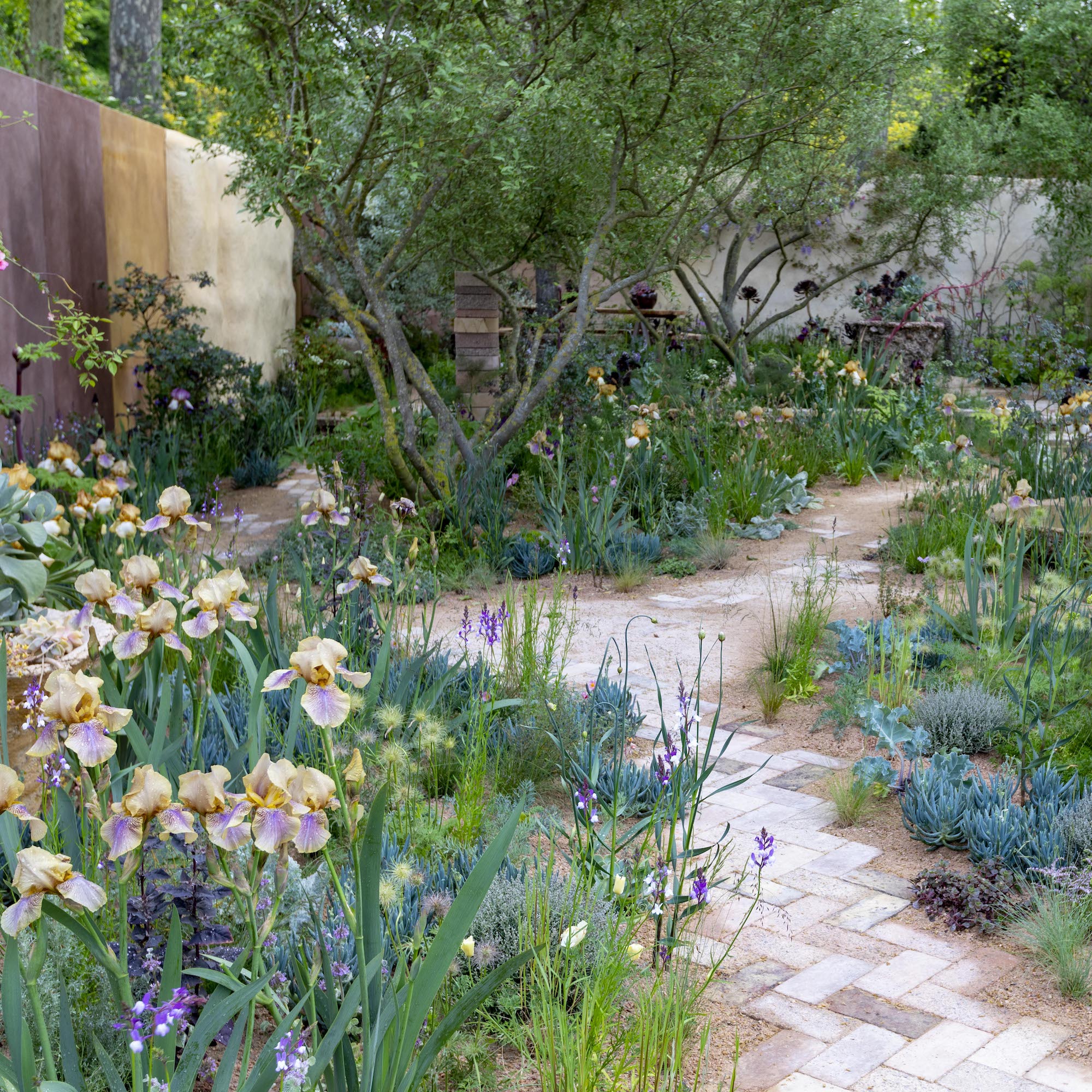
Matrix planting has been tipped as next year's big garden trend after it became the star of the new Oudolf Landscape at RHS Wisley, which has been wowing visitors ever since it opened earlier this year.
The trend has shot straight to the top of our list of garden border ideas, and it's easy to see why – matrix planting blends the best ornamental grasses with woody and perennial plants to create something utterly unlike the neat, orderly rows seen in formal gardens.
Pioneered by Piet Oudolf, the matrix planting technique 'fosters dynamic landscapes which more closely mimic natural plant communities than traditional ornamental borders,' explains award-winning garden designer Zoe Claymore.
'Matrix planting blends the drive for a more relaxed and free/wild looking aesthetic with the need for multi-season interest and more resilient planting,'
The idea is that you select ornamental grasses and perennials for visual impact, then plant in large numbers to create an exciting background effect.
'It's great for bigger and medium sized areas and borders as you need to plant enmasse for impact,' she adds. 'It layers grasses with flowering perennials to create a spontaneous-looking border that's actually highly controlled.'

What you will need
You will need a mix of long-flowering perennials and ornamental grasses to make good on your matrix planting dreams.
Try blending, then Mexican fleabane from Crocus with Achillea millefolium 'Lilac Beauty' from Sarah Raven or Echinacea 'Green Twister' from Thomspon & Morgan.
All that's left to do, then, is mix in some striking grasses:
How to get the look
If you're a fan of matrix planting, it's worth noting that it will 'initially take a bit of work to get established', according to Zoe.
'Once it gets going , though, it can lead to lower maintenance beauty over time!'
1. Do your research
The most important thing to do before you adopt the matrix planting technique, according to Zoe, is to read a book or two on the subject.
Try something like Planting: A New Perspective by Piet Oudolf and Noel Kingsbury from Amazon.

2. Select your bedrock
Once you've read up on matrix planting, you can begin your good work in earnest.
'Pick a few key ornamental grasses, like Carex or Deschampsia, as the bedrock of the space, then blend through these (interplant) a series of key perennial plants in uneven groups that look good when dried in autumn winter and have contrasting architectural forms,' says Zoe. 'Think alliums alongside Eryngium and Echinacea.'
If you're not sure how to plant a border with grasses, most designers suggest planting in drifts of three to add cohesion and movement. You'd ideally weave in grasses of different heights, for plenty of visual interest and texture.

3. Don't forget to contrast
Zoe says it's a good idea to contrast these against the grasses for longer season impact and leave up in the autumn/winter.
'It is also important to pick plants that all thrive in similar conditions. For an even more free-spirited look, add in a couple more perennials (in small doses as secondary plants) dotted over the whole area (verbena is sometimes used here),' she adds.
Now that you know how to start matrix planting, it's time to get out there and create a riotous display ready for the growing year ahead. Good luck!







